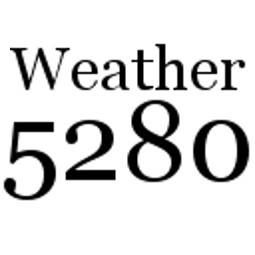The State of the Atmosphere: Tuesday, December 16, 2014

Our weekend storm is now well east of Colorado, and our weather, while cooler than last week, has calmed down. Our snowfall forecast, for the most part, worked out pretty well with what was a complex system. The biggest issue was not coming far enough west with the heaviest band of snowfall across the eastern plains. Around the metro area, snowfall totals from just a trace (DIA) to 4” (southeast Aurora) were common, with very little snow reported across the northern I-25 urban corridor. Denver proper saw about 0.5” of snow, with a Bust Index of 5.
Here’s a look at our final snowfall map Saturday night, with CoCoRaHS reports below. Overall not a bad forecast, and a great snow for northeast Colorado.


Another interesting aspect of this system was the incredibly low Snow Water Equivalent (SWE), at 12:1 and lower across much of the metro. This is very uncharacteristic of a December snow, and even on the low end for a Spring snow. This, you’ll recall, was another concern we outlined last week for snow accumulation potential in Denver.
Remainder of the week
The remainder of the week will feature more December-like temperatures than what we experienced over much of the first half of the month. Highs will be in the 30s and 40s through the weekend. There will be another chance for snow Thursday, but the threat for accumulating snow looks very low at this point. Plan for chilly temperatures and about a 20% chance for snow late Wednesday night through Thursday.
Second half of December
Beyond this week our pattern remains interesting enough to keep an eye on, but nothing convincing with regard to snow. The 12z EURO yesterday showed a good Christmas Eve storm, while other medium range models are dry. While the storm track continues, the latest trend is to keep much of the energy too far south over the next 10 days to bring any appreciable snowfall to northeast Colorado. However, the pattern shift that is to take place for the last part of the month is certainly a lot colder than what we’ve had for most of the month. It has to do with a ridge of high pressure strengthening in the North Pacific and over Alaska. When that happens, cold air usually gets sent southward. Per the latest WMO ECMWF model, you can see that trend happening. Reds equal higher pressure and quieter/warmer weather, while the blues and greens equal lower pressure and general storminess and colder weather:

Notice that all of that orange, red, and white near Alaska? That is a classic signal for cold air to dump into most of the US -- and similar to the pattern that brought record cold to our neck of the woods in mid-November.
The various teleconnections support this trend too.



While the Arctic Oscillation isn’t projected to be terribly negative, the EPO and PNA support much colder air and general storminess impacting parts of the western US. This is a similar pattern to what happened with our big cold shot in early November. It isn’t as potent looking at this time, but would be significant nonetheless.
Snowfall is always the hardest piece of the puzzle. There will be storms moving through, and there will be cold air in place. However, the devil is always in the details -- which are quite sketchy this far out. That is why it is so important to stay current with our forecast. Lots of folks are traveling this time of year. If you don’t pay attention to the forecast, it can jump up and bite you. For those that love winter weather (cold and snow), we would say that the most exciting times of the winter are yet to come. Remember when we said that winter would be a “late show”? Well, we believe that mother nature is simply just getting warmed up.
